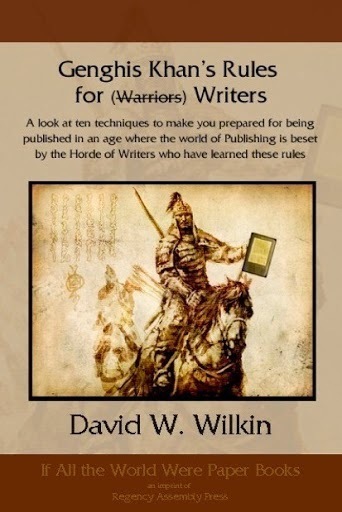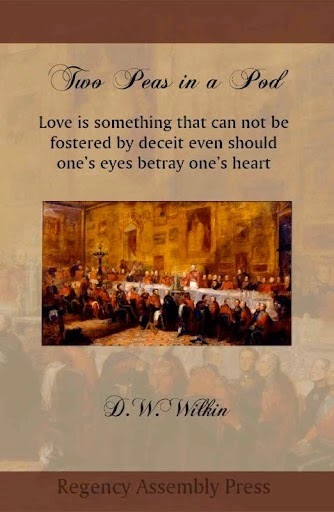D.W. Wilkin's Blog, page 150
March 2, 2015
Regency Personalities Series-Sir Joshua Jebb
Regency Personalities Series
In my attempts to provide us with the details of the Regency, today I continue with one of the��many period notables.
Sir Joshua Jebb
8 May 1793 ��� 26 June 1863
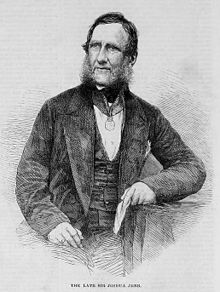
Joshua Jebb
Sir Joshua Jebb was a Royal Engineer and the British Surveyor-General of convict prisons.
He participated in the Battle of Plattsburgh on Lake Champlain during the War of 1812, and surveyed a route between Ottawa River and Kingston where Lake Ontario flows into Saint Lawrence River. However, his route was not followed by Colonel By in building the Rideau Canal.
Jebb was also involved in designing prisons and related buildings, including Pentonville Prison, Broadmoor Hospital, a secure mental hospital in Crowthorne in Berkshire, and Mountjoy Prison in the centre of Dublin.
Jebb was the eldest son of Joshua Jebb of Walton, Derbyshire and his wife Dorothy, daughter of General Henry Gladwin of Stubbing Court. Joshua was born at Chesterfield on 8 May 1793.
After passing through the Royal Military Academy at Woolwich he was commissioned as a second lieutenant in the Royal Engineers on 1 July 1812. He was promoted to first lieutenant on 21 July 1813, and embarked for Canada in the following October. He served with the army under the command of General Francis de Rottenburg on the frontier of Lower Canada until the summer of 1814, when he joined the army of Lieutenant-general Sir George Prevost in the United States, and took part in the campaign of the autumn of 1814. He was present at the Battle of Plattsburgh, 11 September 1814, and was thanked in general orders.
In 1816, he completed a survey for a canal which was designed to allow access to the Canadian heartland.
He returned to England in 1820, after an extended service in Canada. He was stationed at Woolwich and afterwards at Hull until December 1827, when he embarked for the West Indies. He was promoted second captain on 26 February 1828, and was invalided home in September 1829. Having recovered his health he was sent to Chatham. Jebb was appointed adjutant of the royal sappers and miners at Chatham on 11 February 1831, and promoted first captain on 10 January 1837.
In 1837 inquiries conducted in America by William Crawford (1788���1847) led to the adoption of the “separate system” of prison discipline. Jebb was appointed Surveyor-General of prisons, in order to provide the home office with a technical adviser on the construction of prisons. He was employed in designing county and borough prisons, and was associated with the inspectors, Crawford and the Reverend William Whitworth Russell, in the design and construction of the “Model Prison” at Pentonville. Jebb continued in his military duties, and was quartered at Birmingham until he was seconded on 20 September 1839, and his services entirely devoted to civil work.
On 10 March 1838 he had been appointed by the Lord President of the council to hold inquiries on the grants of charters of incorporation to Bolton and Sheffield, and on 21 May of the same year he was made a member of the commission on the municipal boundary of Birmingham. On 23 November 1841 he received a brevet majority for his past services, and on 29 June 1843 he was made a commissioner for the government of Pentonville Prison.
The decline of transportation forced the Government to create an alternative method of punishing criminals. Commencing with a period of strict separation at Pentonville, the convicts were passed to one of the prisons specially constructed with a view to their employment upon public works. For this purpose Jebb designed the prison at Portland. Similar prisons were subsequently erected at Dartmoor, Chatham, Portsmouth and Isle of Wight. In 1843-4 Sir Joshua Jebb erected terrace of houses part of Parkhurst Prison on the Isle of Wight – Nichollson Street, these are now listed buildings.
In 1844, Jebb was appointed a member of a royal commission to report on the punishment of military crime by imprisonment. The commission recommended the establishment of prisons for the exclusive reception of military prisoners, and to be under the supervision of an officer to be termed inspector-general of military prisons, who should also supervise provost and regimental cells. Jebb was appointed to this office on 27 December 1844 in addition to his other duties, and since that date it has been held by the officer at the head of civil prisons, who has always been an officer of royal engineers.
Jebb was promoted lieutenant-colonel on 16 April 1847. On 1 May 1849 his appointment as commissioner of Pentonville prison was renewed. In 1850, a board, called the Directors of Convict Prisons, was formed to replace the various bodies which had previously managed the different convict prisons. Jebb was appointed chairman of the board, and under his direction the progressive system was adopted and developed.
Having served ten years in the civil employment of the state, Jebb had, in accordance with regulations, to return to military duty, or retire from the army. He chose the latter alternative, and left military service on full pay retirement on 1 January 1850. He subsequently received the honorary rank of colonel on 28 November 1854. He was made a K.C.B. for his civil services on 25 March 1859.
In 1861 and 1862 he served on commissions appointed to consider the construction of embankments of the River Thames, and of communications between the embankment at Blackfriars Bridge and the Mansion House, and between Westminster Bridge and Millbank. He died suddenly on 26 June 1863. His successor as Survey General of Prisons was another Royal Engineers officer, Major Edmund Henderson.
Jebb married twice; first, on 14 June 1830, to Mary Legh, daughter of William Burtinshaw Thomas, of Highfield, Derbyshire, who died in 1850, and by whom he had a son, Joshua Gladwyn, and three daughters. He was remarried on 5 September 1854, to Lady Amelia Rose Pelham, daughter of Thomas Pelham, the Earl of Chichester, who survived him.

Rules for better writing from Genghis Khan
The Rules for Writers
Those who follow me for a long time know that I also write in other fields aside from Regency Romance and the historical novels I do.
A little while ago, before the end of 2011 and the 2011 NaNoWriMo, (where I wrote the first draft of another Regency) I started work on a project about writing.
The premise was what one should think about when starting and working on a project. I came up with 10 rules to follow in a quest to become a writer and tackle that novel.
Here are The 10 Rules:
1) Read like a writer
2) Have a good story
3) Your work will be Thematic
4) Plot: The seven deadly ones
5) Characters will carry your tale, near and far
6) Words are your warriors
7) Stories are structured
8) All tales building to a Crescendo
9) Genghis edits history, shouldn���t you as well
10) Act like a writer
So it is now released. For $4.99 you can get this treatise on honing your skills.
Barnes and Noble for your Nook
Genghis Khan came from the Steppes of Mongolia, a family torn apart by neighboring tribes, to unite those tribes, or defeat them, and then conquer the greater part of the known world. His heirs would continue his conquest right to the edge of western society. The world feared the Mongols, and Genghis. Now, you can benefit, as a writer from the lessons he has to impart on how, with the changing world of publishing, you can perfect your work and write not only good material for this new age of book publishing. But can write great work for this new age. 10 simple lessons, and you will be on your way to conquering the bookshelves of the 21st century. This short book will have you learning all you really need to know to elevate your writing to the next level. These simple lessons will start you on the road to better writing as a member of the Horde in no time.
Feedback
If you have any commentary, thoughts, ideas about the book (especially if you buy it, read it and like it ;-) then we would love to hear from you.

March 1, 2015
Regency Personalities Series-Princess Victoria of Saxe-Coburg-Saalfeld
Regency Personalities Series
In my attempts to provide us with the details of the Regency, today I continue with one of the��many period notables.
Princess Marie Luise Victoire of Saxe-Coburg-Saalfeld, Duchess of Kent and Strathearn
17 August 1786����� 16 March 1861
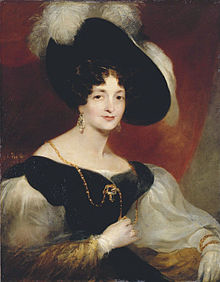
Victoria of Saxe-Coburg-Saalfeld
Princess Victoria of Saxe-Coburg-Saalfeld
Mary Louise Victoria was born in Coburg in the Holy Roman Empire of the German Nation. She was the fourth daughter and seventh child of Franz Frederick Anton, Duke of Saxe-Coburg-Saalfeld, and Countess Augusta of Reuss-Ebersdorf. She had a rough childhood growing up with her brothers and sisters. One of her brothers was Ernest I, Duke of Saxe-Coburg-Gotha, and another brother, Leopold, married, in 1816, Princess Charlotte of Wales, the only legitimate daughter of the future King George IV, and heiress presumptive to their British throne.
On 21 December 1803 at Coburg, she married (as his second wife) Charles, Prince of Leiningen (1763���1814), whose first wife, Henrietta of Reuss-Ebersdorf, was her aunt. Charles and Victoria had two children:
Carl Friedrich Wilhelm Emich, Prince of Leiningen married, to Countess Maria Klebelsberg
Princess Anna Feodora Auguste Charlotte Wilhelmine married, to Ernst I, Prince of Hohenlohe-Langenburg
Through her first marriage, she is a direct matrilineal ancestor to various members of royalty in Europe, including Carl XVI Gustaf of Sweden, Felipe VI of Spain, and Constantine II of Greece.
The death of Princess Charlotte of Wales, the wife of Victoria’s brother Leopold in 1817, prompted a succession crisis, and, with Parliament offering a financial incentive, three of Charlotte’s uncles, sons of George III, were prepared to marry. One of Charlotte’s uncles, Prince Edward, Duke of Kent and Strathearn proposed to Victoria and she accepted. The couple were married on 29 May 1818 at Amorbach, and again, on 11 July 1818, at Kew, the second ceremony being a joint ceremony at which Edward’s brother, the Duke of Clarence, later King William IV, also married his wife, Princess Adelaide of Saxe-Meningen. Shortly after the marriage, the pair moved to Germany, where the cost of living would be cheaper. Soon after, Victoria became pregnant, and the Duke and Duchess, determined to have their child born in England, raced back, arriving at Dover on April 23, 1819, and moved into Kensington Palace, where she soon gave birth to a daughter, Victoria
The Duke of Kent died suddenly of pneumonia in January 1820, a few days before his father, King George III. The widow Duchess had little cause to remain in the United Kingdom, not speaking the language and having a palace at home in Coburg, where she could live cheaply on the incomes of her first husband. However, the British succession at this time was far from assured����� of the three brothers older than Edward, the new king, George IV, and the Duke of York were both estranged from their wives (both wives being past childbearing age) and the third, the Duke of Clarence (the future William IV) had yet to produce any surviving children with his wife. The Duchess decided that she would do better by gambling on her daughter’s accession than by living quietly in Coburg, and sought support from the British government, having inherited her second husband’s debts. After the death of Edward and his father, the young Princess Victoria was still only third in line for the throne, and Parliament was not inclined to support yet another impoverished royal. The Duchess of Kent was allowed a suite of rooms in the dilapidated Kensington Palace, along with several other impoverished nobles. There she brought up Victoria, who would become Queen of the United Kingdom and Empress of India.
The Duchess was given little financial support from the Civil List. Parliament was not inclined to increase her income, remembering the Duke’s extravagance. Her brother, Leopold, was a major support, since he had a huge income of fifty thousand pounds per annum for life, which Parliament allotted to him on his marriage to Princess Charlotte, as he was expected to become the consort of the monarch in due course; but, even after Charlotte’s death, Parliament never revoked Prince Leopold’s annuity.
In 1831, with George IV dead and the new king, William IV, still without legitimate issue, the young princess’ status as heir presumptive and the Duchess’s prospective place as regent led to major increases in income. A contributing factor was Leopold’s designation as King of the Belgians (he surrendered his British income on election) and the perceived impropriety in having the heir presumptive supported by a foreign sovereign.
The Duchess relied heavily on John Conroy, a Welsh officer whom she engaged as her private secretary. Perhaps because of Conroy’s influence, the relationship between the Duchess’s household and William IV soon soured, with the Duchess regarding the king as an oversexed oaf. William was denied access to his young niece as much as the Duchess dared. She further offended the King by taking rooms in Kensington Palace that the King had reserved for himself. Both before and during William’s reign, she snubbed his illegitimate children, the FitzClarences. All of this led to a scene at a dinner in 1836 when the King, again feeling offended by the Duchess and Conroy, expressed hope that he would live long enough to render a regency for Victoria unnecessary, and decried the influence on the heir presumptive by those around her.
Conroy had high hopes for his patroness and himself: he envisioned Victoria succeeding the throne at a young age, thus needing a regency government, which, following the Regency Act of 1831, would be headed by the Princess’s mother (who had already served in that capacity in Germany following the death of her first husband). As the personal secretary of the Duchess, Conroy would be the veritable “power behind the throne”. He did not count on Victoria’s uncle, William IV, surviving long enough for Victoria to reach her majority. He had cultivated her mother as his ally, and ignored and insulted Victoria. Now he had no influence over her, and thus tried to force her to make him her personal secretary upon her accession. This plan, too, backfired, as Victoria came to associate her mother with Conroy’s schemes, for pressuring her to sign a paper declaring Conroy her personal secretary. When Victoria became queen, she relegated the Duchess to separate accommodations, away from her own.
When the Queen’s first child, the Princess Royal, was born, the Duchess of Kent unexpectedly found herself welcomed back into Victoria’s inner circle. It is likely that this came about as a result of the dismissal of Baroness Lehzen at the behest of Victoria’s husband (and the Duchess’s nephew), Prince Albert. Firstly, this removed Lehzen’s influence, and Lehzen had long despised the Duchess and Conroy, suspecting them of an illicit affair. Secondly, it left the Queen wholly open to Albert’s influence, and he likely prevailed upon her to reconcile with her mother. Lastly, Conroy had by now exiled himself to the continent, and that divisive influence was removed. The Duchess’s finances, which had been left in shambles by Conroy, were revived thanks to her daughter and her daughter’s advisors. She became a doting grandmother, by all accounts, and was closer to her daughter than she ever had been.
There has been some speculation, not only that the Duchess and Conroy were lovers, but that the Duchess had earlier been unfaithful to the Duke of Kent and that Victoria was not his daughter. This has been promoted most prominently by William and Malcolm Potts’ 1995 book Queen Victoria’s Gene. Those who promote this position point to the absence of porphyria in the British Royal Family among the descendants of Queen Victoria – it had been widespread before her; not to mention the rise of haemophilia, unknown in either the Duke’s or Duchess’s family, among the best documented families in history. Victoria herself was puzzled by the emergence of the disease, given its absence in either family.
John R��hl’s book, Purple Secret, documents evidence of porphyria in Victoria, the Princess Royal’s daughter Charlotte and her grand daughter, Feodore. It goes on to say that Prince William of Gloucester was diagnosed with the disease shortly before his own death in a flying accident. (although it should be noted that he is also descendant of George III through Queen Victoria’s uncle, the Duke of Cambridge)
In practice, this would have required the Duchess’s lover to be haemophiliac����� an extremely unlikely survival, given the poor state of medicine at the time. Actual evidence to support this theory has not arisen, and haemophilia occurs spontaneously through mutation in at least 30% of cases. Queen Victoria has also been said by some to have a strong resemblance to her Hanoverian relatives, particularly George IV.
The Duchess died on 16 March 1861, at the age of 74. She is buried in the Duchess of Kent’s Mausoleum at Frogmore, Windsor Home Park, near to the royal residence Windsor Castle.
Queen Victoria and Albert dedicated a window in the Royal Chapel of All Saints in Windsor Great Park to her memory.
The Queen was much affected by her mother’s death. It was the start to a disastrous year, which would end with Albert’s death

An Unofficial Guide to how to win the Scenarios of Soaked the 1st Expansion for Rollercoaster Tycoon 3
An Unofficial Guide to how to win the Scenarios of Soaked
I have been a fan of this series of computer games since early in its release of the very first game. That game was done by one programmer, Chris Sawyer, and it was the first I recall of an internet hit. Websites were put up in dedication to this game where people showed off their creations, based on real amusement parks. These sites were funded by individuals, an expense that was not necessarily as cheap then as it is now. Nor as easy to program then as it might be to build a web page now.
Prima Books released game guides for each iteration of the game, Rollercoaster Tycoon 1, Rollercoaster Tycoon 2 and Rollercoaster Tycoon 3 (RCT3) but not for the expansion sets. And unlike the first two works, the third guide was riddle with incorrect solutions. As I played the game that frustrated me. And I took to the forums that Atari, the game publisher hosted to see if I could find a way to solve those scenarios that the Prima Guide had written up in error. Not finding any good advice, I created my own for the scenarios that the ���Official��� Guide had gotten wrong.
Solutions that if you followed my advice you would win the scenario and move on. But if you followed the ���Official��� version you would fail and not be able to complete the game. My style and format being different than the folks at Prima, I continued for all the Scenarios that they had gotten right as well, though my solutions cut to the chase and got you to the winner���s circle more quickly, more directly.
My contributions to the ���Official��� Forum, got me a place as a playtester for both expansions to the game, Soaked and Wild. And for each of these games, I wrote the guides during the play testing phase so all the play testers could solve the scenarios, and then once again after the official release to make changes in the formula in case our aiding to perfect the game had changed matters. For this, Atari and Frontier (the actual programmers of the game) placed me within the game itself.
And for the longest time, these have been free at the ���Official��� Forums, as well as my own website dedicated to the game. But a short time ago, I noticed that Atari, after one of its bankruptcies had deleted their forums. So now I am releasing the Guide for one and all. I have added new material and it is near 100 pages, just for the first of the three games. It is available for the Kindle at present for $2.99.
(Click on the picture to purchase)
Not only are all 9 Scenarios covered, but there are sections covering every Cheat Code, Custom Scenery, the famous Small Park Competition, the Advanced Fireworks Editor, the Flying Camera Route Editor which are all the techniques every amusement park designer needs to make a fantastic park in Rollercoaster Tycoon 3.
Scenarios for Soaked!
1) Captain Blackheart’s Cove
2) Oasis of Fun
3) Lost Atlantis
4) Monster Lake
5) Fountain of Youth
6) World of the Sea
7) Treasure Island
8) Mountain Spring
9) Castaway Getaway

February 28, 2015
New Regency Romance in search of Beta Readers
Just finished the first draft of my next Regency Romance. So now it is time to solicit from those who might be interested, aid by enlisting you in my army of Beta Readers.
The premise of this work, is one little tidbit that Jane Austen relates in regards to one of the characters from Pride and Prejudice. Caroline Bingley has a marriage fortune of 20,000 pounds.
As we know, that is a lot of money, ranging in value in todays dowry of estimates of 1,000,000 pounds to $40,000,000.
It is at least four years of the money that Charles Bingley has yearly. Other estimates place that a Regency Gentlemen could survive in London on 100 pounds a year, and should they maintain a household at the high end of 2,000 a year, that is ten years of living large.
One should note that the richest dowry was for the Wiltshire Heiress, Catherine Tylney-Long had a fortune of 40,000 a year. (Four times what Darcy had) and married the nephew of Arthur Wellesley who would become the Duke of Wellington.
But back to Caroline. She may have a sharp tongue, and not a friend to Lizzie Darcy, but she is sister to Jane Bingley and we can be sure that Jane would rather have her out of the house. The only way to assure that is to marry her off.
But who wouldst ever take such a shrew…
���She���s a shrew!��� Said Darcy.
The Honourable Colonel Stephen Fitzwilliam chose his words carefully. ���Of course she is. If you had been passed on left on the shelf, you, as taciturn as you are, would also be rather shrewish, I would wager.��� Though the Colonel, for lack of funds, found that he could but wager not more than ten guineas a year. His allowance, and his pay, did not go as far as one wished, especially when having to underwrite so much of the mess bill for the regiment. And the man he usually would wager with, was sitting next to him.
Cards however, that was another story.
���Damn, man. My wife������
���Your wife is the very definition of good manners, and that, should Ms Bingley learn to imitate them, would not only be flattery, but would be greatly becoming.��� Fitzwilliam said. He had given that some thought. Those who were intimate with Elizabeth Darcy knew that Caroline and Bingley and she were not close friends. That they tolerated each other was because of Ms Bingley���s brother being married to Mrs Darcy���s sister.
���I cannot for the life of me fathom how you ever could set your intent upon Caroline Bingley.���
���If you would refrain from saying her christian name in public, it would be more seemly. That I must give you a scold shows that this has unhinged you, cousin.��� Darcy was more often apt to remind the Colonel about such matters.
Darcy shook his head. ���Yes, you will forgive me. Have you asked for her hand? Charles certainly would have informed me the instant he knew of your intent.���
���I have not, but before the end of this Season, I inform you that she shall be my bride. I thought to let you know first for������ Here Fitzwilliam found the choice of words difficult.
���Because for the love my wife bears you, as not only my cousin, but one of my two closest friends, you think she will take a pet against you.��� Darcy was able to articulate the thought.
“The thought had occurred to me. Mrs Darcy is perhaps the most respected amongst our set, and should she act favorably to this notion, then all our future shall be the more blessed for it.” Fitzwilliam was not sure if Darcy would warm to the idea quickly, for Ms Bingley had muddled her future countless times in regards to her treatment of Mrs Darcy.
“As you know Mrs Darcy well, and she regards you as a brother, she will let you know herself of her opinion. I confess, I am always amazed at her thoughts on certain matters. As you well know I am sometimes unable to make correct predictions in what my wife may think on certain issues.”
Fitzwilliam grinned at his cousin.The Colonel said, “I do indeed know this. Well has it cost you to my benefit on more than one occasion.”
Darcy’s love for his new wife, though their marriage was near a year before, his cousin had made some small wager with Fitzwilliam on how Mrs Darcy might react, or act upon some issues. Fitzwilliam was never sure if Darcy intentionally lost these, but as yet if led into a wager on the matter, Darcy had not won these small bets. Though they both well knew that the new groom should never have indulged in them. Thus they never spoke of them unless in private such as they were then at their club.
So opens the story that I solicit you to come to my aid, read, review, point out my glaring typoes and mistakes, throw out half way through and say, sorry David, can’t help. Read to the end because you enjoyed it and thought it fun….
Post a comment, send an email, get on your horse and ride over for me to personally hand you a copy.

Regency Personalities Series-Marchioness of Hertford Maria Emilia Fagnani
Regency Personalities Series
In my attempts to provide us with the details of the Regency, today I continue with one of the��many period notables.
Marchioness of Hertford Maria Emilia Fagnani
24 August 1771 ��� 2 March 1856
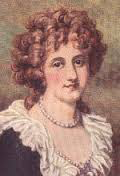
Maria Emilia Fagnani
Marchioness of Hertford Maria Emilia Fagnani was illegitimate. Born in the 1770s, most likely, she was the daughter of Costanza Brusati, the Italian Marchesa Fagnani, and of either William Douglas, 4th Duke of Queensberry, who was famously detested by Robert Burns, or George Selwyn, a prominent Tory and lover of Grace Elliott. He was also a member of the Satanic Hellfire Club, and even possibly, though doubtful, George Selwyn’s butler. (The last seems a fabrication to discredit)
Both Queensberry and Selwyn believed themselves to be her father and left her very large legacies.
On 18 May 1798, Maria married Francis Seymour-Conway, Earl of Yarmouth, the son of the 2nd Marquess of Hertford and Isabella Ingram-Shepheard. The Marchioness, Francis��� mother Isabella was the daughter of the Viscount Irvine, and the mistress of the Prince of Wales. By 1802 Maria and Francis were estranged, and she lived in Paris for the rest of her life.
Lady Francis Maria Seymour-Conway (d. 1822)
Captain Richard Seymour-Conway, 4th Marquess of Hertford (1800���1870)
Lord Henry Seymour-Conway (1805���1859)
When George III of the United Kingdom was insane, he announced that he was going to take Lady Yarmouth as his mistress.
The Marquess inherited his title in 1822. He died in 1842. The dowager Marchioness died in 1856 in Paris.
William Makepeace Thackery parodied her husband as the Marquess of Steyne in his masterpiece, Vanity Fair.

Two Peas in A Pod, A Regency Romance
Two Peas in a Pod has now passed the exclusivity to Amazon test and is available in wider release, electronically (digitally) for other readers now. We sold a few copies on Amazon but nothing to warrant an exclusivity period. Amazon is too big and too full of itself.
Two Peas in a Pod is still available as a Trade paperback click here to order Regency Assembly Press.
$3.99 for an electronic copy. The Trade Paperback, due to publishing costs and the cut that Amazon takes continue to see a Trade Paperback costing $15.99 (The much hyped royalties that we writers are supposed to get is nowhere near what the news reports say. Most of that price is taken by Amazon.)
iBookstore (These are my books
and still at Amazon
Here is a picture, which of course you can click on to go fetch the book:
Love is something that can not be fostered by deceit even should one���s eyes betray one���s heart.
Two brothers that are so close in appearance that only a handful have ever been able to tell them apart. The Earl of Kent, Percival Francis Michael Coldwell is only older than his brother, Peregrine Maxim Frederick Coldwell by 17 minutes. They may have looked as each other, but that masked how they were truthfully quite opposite to one another.
For Percy, his personality was one that he was quite comfortable with and more than happy to let Perry be of a serious nature. At least until he met Veronica Hamilton, the daughter of Baron Hamilton of Leith. She was only interested in a man who was serious.
Once more, Peregrine is obliged to help his older brother by taking his place, that the Earl may woo the young lady who has captured his heart. That is, until there is one who captures Peregrine���s heart as well.
There is a visual guide to Two Peas in a Pod 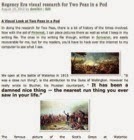 as well at Pinterest and a blog post here.
as well at Pinterest and a blog post here.

February 27, 2015
Regency Personalities Series-George Duncan Gordon 5th Duke of Gordon
Regency Personalities Series
In my attempts to provide us with the details of the Regency, today I continue with one of the��many period notables.
George Duncan Gordon 5th Duke of Gordon
2 February 1770 ��� 28 May 1836
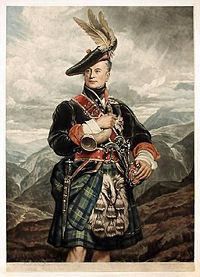
George Duncan Gordon
George Duncan Gordon 5th Duke of Gordon was born at Edinburgh on 2 February 1770, the eldest son of Alexander Gordon, 4th Duke of Gordon and his wife, the celebrated Jane Gordon, Duchess of Gordon, n��e Lady Jane Maxwell. He was educated at Eton. He became a professional soldier and rose to the rank of General. As Marquess of Huntly, he served with the Guards in Flanders from 1793���4. He raised the 92nd Highlanders and commanded the regiment in Spain, Corsica, Ireland and the Netherlands from 1795 to 1799, where he was badly wounded. He commanded a division in the Walcheren Expedition of 1809.
He was a freemason and was Grand Master of the Grand Lodge of Scotland from 1792 to 1794. He was Member of Parliament for Eye from 1806 to 1807. On 11 April 1807, at the age of 37, he was summoned to the House of Lords in one of the minor peerages of his father (Baron Gordon of Huntley, co. Gloucester). He was appointed a Privy Counsellor in 1830, was Keeper of the Great Seal of Scotland from 1828 to 1830 (a post that his father had held until 1827), and from 1827 to 1836 was Governor of Edinburgh Castle.
He married at Bath, on 11 December 1813, Elizabeth Brodie, who was twenty-four years his junior. Brodie was the daughter of Alexander Brodie of Arnhall in Kincardineshire. Elizabeth Grant described her thus:
His bride was young, and good, and rich, but neither clever nor handsome. She made him very happy and paid his most pressing debts, that is her father did, old Mr Brodie of the Burn, brother to Brodie of Brodie…He made a really large fortune; he gave with his daughter, his only child, ��100,000 down, and left her more than another at his death. Really to her husband her large fortune was the least part of her value; she possessed upright principles, good sense, and she turned out a first-rate woman of business. In her later years she got into the cant of the Methodists.
However, at the time of his marriage and, in fact, until he inherited the Dukedom, George found himself in almost constant financial difficulties. He was referred to as “Lord Huntly now in the decline of his rackety life, overwhelmed with debts, sated with pleasure, tired of fashion, the last heir male of the Gordon line”. While his marriage remedied some of these problems, it did not supply the much sought-after heir.
Like his father, George acquired many of the positions which the Gordon family could expect almost as of right. These included the posts of Lord Lieutenant of Aberdeenshire, Chancellor of Marischal College, Aberdeen and Lord High Constable of Scotland. He held the latter post of Lord High Constable for the Coronation of King George the Fourth in 1820.
By the time of his succession to the dukedom, he had established a reputation as an extreme reactionary. He steadfastly opposed the Great Reform Bill and when the majority of Tory Peers opted to abstain, he remained one of the twenty-two “Stalwarts” who voted against the Third Reading of the Bill in the House of Lords on 4 June 1832.
Throughout much of this period, his wife served Adelaide of Saxe-Meiningen, wife of King William IV, at Court. Indeed, she was given the Queen’s Coronation robe, which is now to be found with many other Gordon memorabilia at Brodie Castle.
Nathaniel Parker Willis, the American journalist, has left us with an interesting account of life at Gordon Castle in the twilight years of the 5th Duke’s life. He described the “canonically fat porter” at the lodges who admitted him to a “rich private world peopled by ladies cantering sidesaddle on palfreys, ladies driving nowhere in particular in phaetons, gentlemen with guns, keepers with hounds and terrier at heel, and everywhere a profusion of fallow deer, hares and pheasants. At the castle a dozen lounging and powered menials.” Willis continued: “I never realised so forcibily the splendid results of wealth and primogeniture.” Just before dinner the Duke called at his room, “an affable white-haired gentleman of noble physiognomy, but singularly cordial address, wearing a broad red ribbon across his breast, and led him through files of servants to a dining room ablaze with gold plate.”
The Duke died at Belgrave Square on 28 May 1836, aged 66. The Dukedom of Gordon became extinct, but the Marquessate of Huntly (created in 1599) passed to his distant cousin the Earl of Aboyne. The Gordon estates passed to his nephew, Charles Lennox, 5th Duke of Richmond. The Gordon moveable property was left by the Duchess to the Brodies of Brodie.
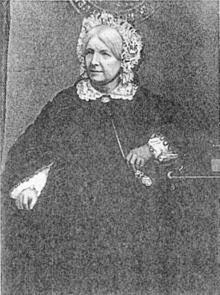
Elizabeth Brodie, Duchess of Gordon
Elizabeth Brodie, the last Duchess of Gordon, retired to Huntly Castle Lodge, where she became even more fervently religious than she had been previously and conducted the rest of her life with good grace and Christian dignity until her own death on 31 January 1864, when the last trace of the original Dukedom of Gordon was also extinguished.
The Duke and Duchess of Gordon established Gordon Chapel (Scottish Episcopal Church) in Fochabers and it contains a memorial tablet to the 5th and last Duke.
The Duke had three illegitimate children: Charles Gordon, Susan Sordet, and Georgiana McCrae.

A Trolling we Will Go Omnibus: The first three Fantasy stories of Humphrey and Gwendolyn
A Trolling We Will Go Omnibus:The Early Years Not only do I write Regency and Romance, but I also have delved into Fantasy.
The Trolling series, (the first three are in print) is the story of a man, Humphrey. We meet him as he has left youth and become a man with a man���s responsibilities.
We follow him in a series of stories that encompass the stages of life. We see him when he starts his family, when he has older sons and the father son dynamic is tested.
We see him when his children begin to marry and have children, and at the end of his life when those he has loved, and those who were his friends proceed him over the threshold into death.
All this while he serves a kingdom troubled by monsters. Troubles that he and his friends will learn to deal with and rectify.
Here are the first three books together as one longer novel.
A Trolling We Will Go, Trolling Down to Old Mah Wee and Trolling���s Pass and Present.
Available in a variety of formats.
For $6.99 you can get this fantasy adventure.
Barnes and Noble for your Nook
The stories of Humphrey and Gwendolyn. Published separately in: A Trolling we Will Go, Trolling Down to Old Mah Wee and Trollings Pass and Present.
These are the tales of how a simple Woodcutter and an overly educated girl help save the kingdom without a king from an ancient evil. Long forgotten is the way to fight the Trolls.
Beasts that breed faster than rabbits it seems, and when they decide to migrate to the lands of humans, their seeming invulnerability spell doom for all in the kingdom of Torahn. Not only Torahn but all the human kingdoms that border the great mountains that divide the continent.
Feedback
If you have any commentary, thoughts, ideas about the book (especially if you buy it, read it and like it ;-) then we would love to hear from you.

February 26, 2015
Regency Personalities Series-Elizabeth Lamb Viscountess Melbourne
Regency Personalities Series
In my attempts to provide us with the details of the Regency, today I continue with one of the��many period notables.
Elizabeth Lamb Viscountess Melbourne nee Milbanke
15 October 1751 ��� 6 April 1818
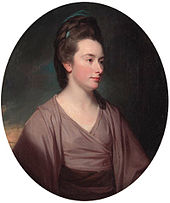
Elizabeth Lamb
Elizabeth Lamb Viscountess Melbourne was baptised on 15 October 1751 in the village of Croft-on-Tees, North Yorkshire, the daughter of Sir Ralph Milbanke, 5th Baronet and his wife Elizabeth (n��e Hedworth). Elizabeth’s brother was Sir Ralph Noel, 6th Baronet; the family resided at Halnaby Hall, Yorkshire. Her father was a politician, and her maternal grandfather was John Hedworth, Member of Parliament for County Durham. Elizabeth was privately educated and learned French and poetry composition. Her mother died in 1767. Two years later, Elizabeth met Sir Peniston Lamb, 2nd Baronet; they married in London on 1 April 1769. The couple lived at Melbourne House in Piccadilly and Elizabeth quickly became a well-known figure in London Whig society. She was apparently unaffected by her husband’s infidelity early in their marriage with actress and courtesan Sophia Baddeley, just as he came to tolerate her numerous love affairs. Peniston was raised to the Peerage of Ireland as Lord Melbourne, Baron of Kilmore, in 1770 and Viscount Melbourne in 1781. As well as Melbourne House, the family had country residences at Brocket Hall in Hertfordshire and Melbourne Hall in Derbyshire.
From the start of her marriage, Lady Melbourne cultivated friendships that helped her position in society, and her husband’s career. These relationships were frequently with men, some of whom became lovers. She was noted for discretion in her affairs: she famously remarked that no man was safe with another’s secrets and no woman with her own. Unlike her daughter-in-law, Lady Caroline Lamb, she had a clear understanding of what society will condone and what it will not condone. If not an intellectual she was highly intelligent; it has been said that within the rather narrow limits of her experience, her knowledge of life was remarkable.
She was a devoted mother, and worked tirelessly to advance the careers of all her children, especially William. Lord David Cecil remarked that few children have had a better mother, although her reputation for immorality caused them some distress: George once came to blows with a friend who said “your mother is a whore”. William, though admitting that his mother’s private life was not blameless, called her “the most sagacious woman he ever knew” and remarked that ” she kept me straight as long as she lived”.
After the marriage in 1774 of Lady Georgiana Spencer to William Cavendish, 5th Duke of Devonshire Lady Melbourne became the close friend and personal advisor of the Duchess. Until this point, Lady Melbourne had enjoyed unrivalled success as a political hostess and quickly recognised that the young duchess, with a higher rank and better connections, would be a more valuable friend than rival. The two women were painted, alongside their friend, sculptor Anne Damer, by Daniel Gardner as the Three Witches in his 1775 painting Witches Round the Cauldron. Lady Melbourne featured as the character of Lady Besford in The Duchess’ novel The Sylph. By contrast she disliked the Duchess’ sister Lady Bessborough, a dislike she later extended to Henrietta’s daughter Caroline; true to her practical nature, this dislike in no way interfered with her support for her son William’s marriage to Caroline, a social step up for the Lamb family, who were still considered newcomers to polite society.
By the late 1770s, Lady Melbourne was romantically involved with George Wyndham, 3rd Earl of Egremont. There was a rumour that the Earl had bought her from a previous lover, Lord Coleraine, for ��1,000. Egremont remained unmarried, probably due to Lady Melbourne’s influence. It is believed that he was the father of Lady Melbourne’s children William, Emily and possibly Frederick.
In 1782, Lady Melbourne became acquainted with George, Prince of Wales while visiting her son Peniston twice a week at Eton College. The relationship proved to be of benefit to Lord Melbourne who was made Gentleman of the Bedchamber to Prince George at Carlton House. Lady Melbourne’s fourth son George (b. 1784) was widely believed to have been fathered by the prince, who acted as the boy’s godfather.
Later in life, Lady Melbourne formed a friendship with poet Lord Byron. She became his confidante during his affair with her daughter-in-law (Lady Caroline Lamb, who had married William in 1805). Although she approved of her son’s marriage on social grounds, Lady Melbourne disliked Caroline intensely and their relationship was always bad. By contrast she liked Byron, and blamed him neither for having the affair with Caroline, or for ending it. Byron later married Lady Melbourne’s niece Anne Isabella Milbanke.
Lord Melbourne was made a peer of the United Kingdom as Baron Melbourne of Melbourne in 1815. Lady Melbourne died on 6 April 1818 at Melbourne House of rheumatism: her slow and painful death distressed her loved ones greatly. It was entirely in character that on her deathbed she urged her daughter Emily to be faithful, not to her husband, Lord Cowper but to her lover, Lord Palmerston ( Emily and Palmerston eventually married after Cowper’s death). She was survived by her husband who died in 1828.
Lady Melbourne had six children that survived childhood; infant twins died in 1788. Of the remaining six, only the eldest, Peniston, was certainly fathered by Lord Melbourne. Their youngest daughter Harriet died of consumption in 180 at the age of 14; the young Peniston succumbed to the same illness in 1805, at 4.
Hon. Peniston Lamb (1770���1805)
William Lamb, 2nd Viscount Melbourne (1779���1848)
Frederick Lamb, 3rd Viscount Melbourne (1782���185)
Hon. George Lamb (1784���184)
Emily Lamb, Lady Cowper (1787���1869)
Harriet Lamb (1789���180)


